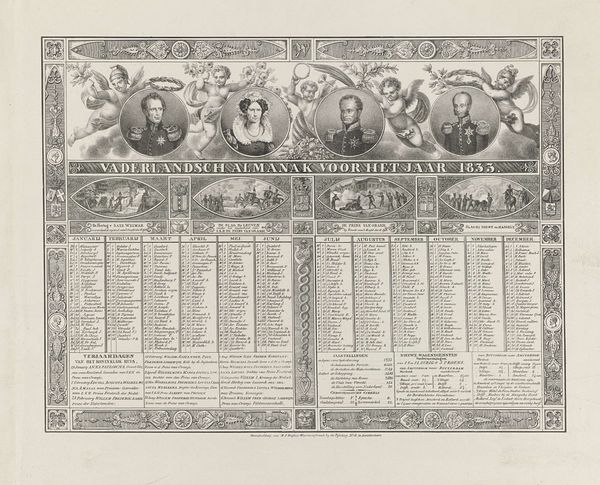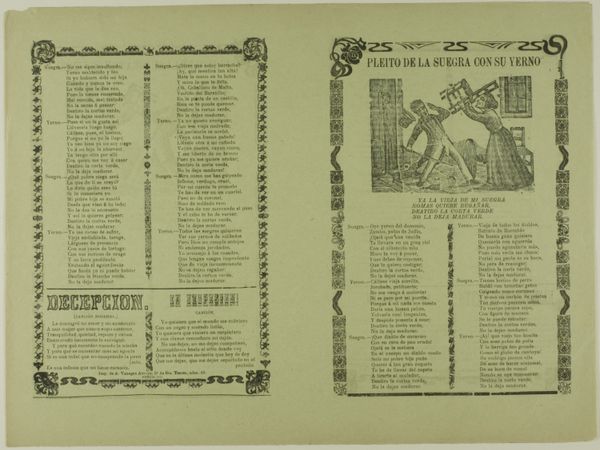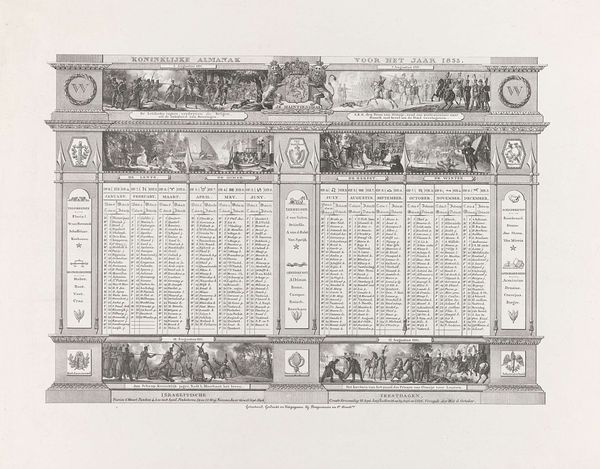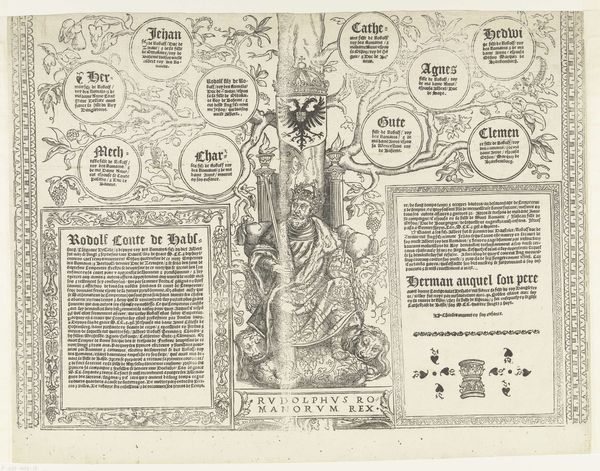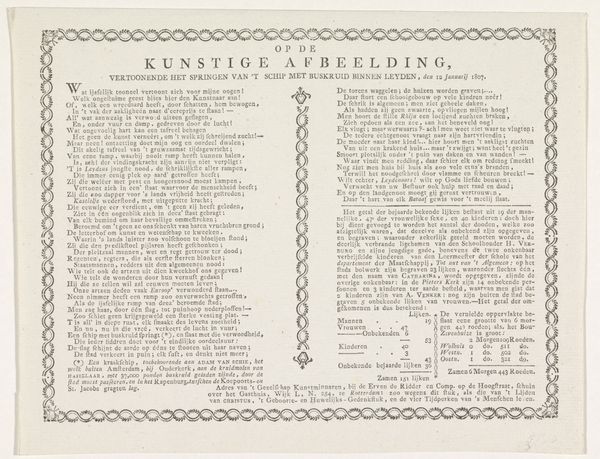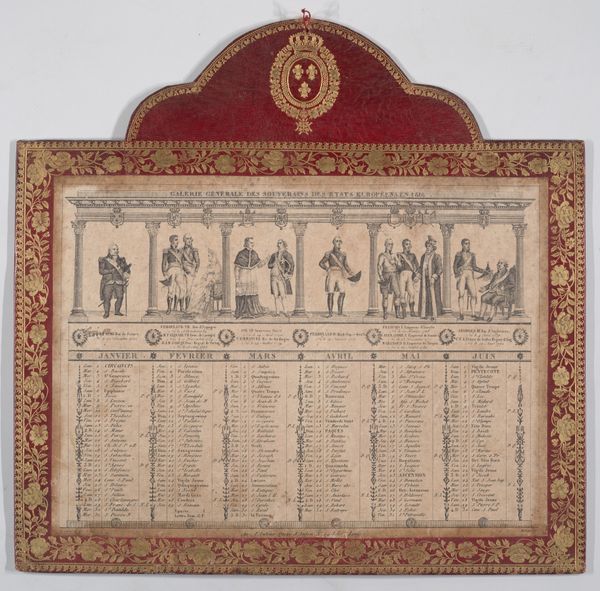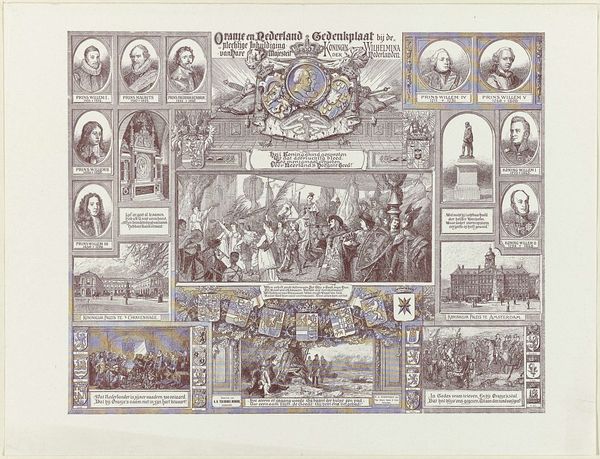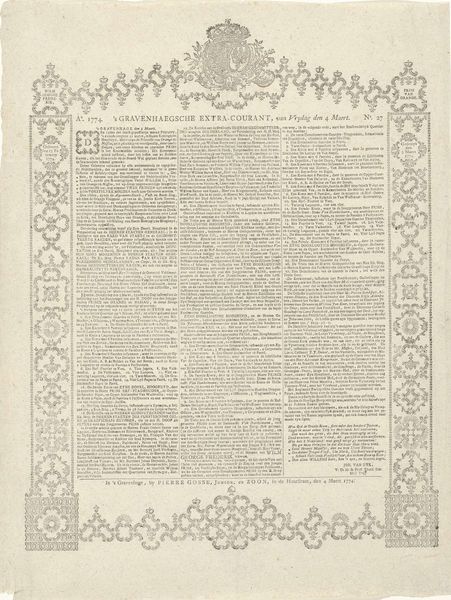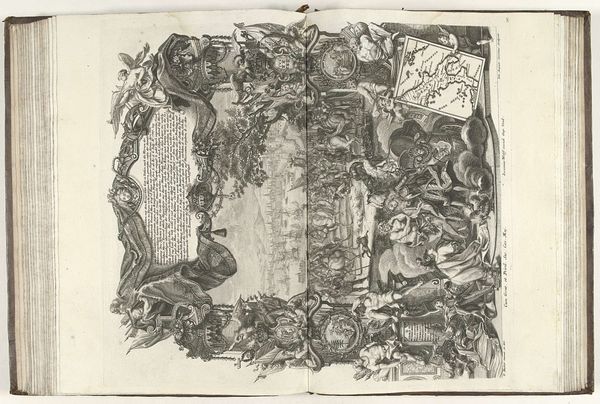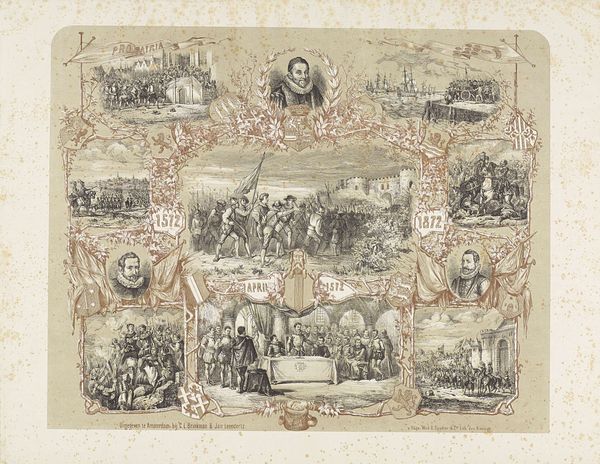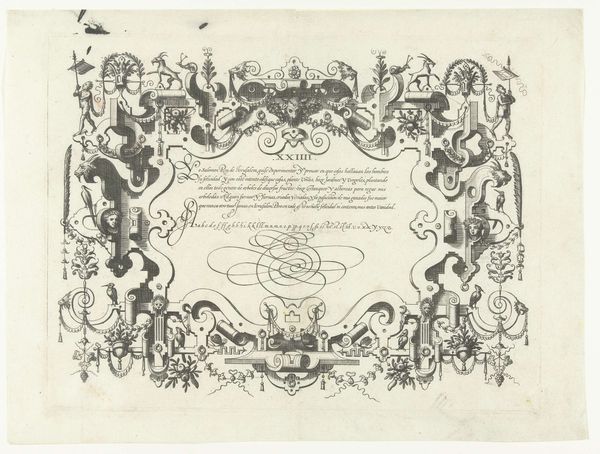
Dimensions: height 405 mm, width 455 mm
Copyright: Rijks Museum: Open Domain
Curator: This is the "Vaderlandsch Almanak voor het jaar 1832," or the National Almanac for the year 1832, created in 1831. It’s a lithograph, engraving, and print currently held at the Rijksmuseum. It offers us a window into the Dutch national consciousness of the time. Editor: My first impression is how densely packed it is. It feels very…deliberate. All those little vignettes and portraits surrounded by ornate borders! What's your take on the central image of the battle? Curator: That's a key focal point. It depicts a historical scene, very likely commemorating Dutch military prowess and the House of Orange. Almanacs of this era often served as subtle forms of political messaging. Editor: The figures seated on clouds—almost like allegorical representations of the Netherlands—are really striking. One carries a sword, the other a shield…definitely leaning into the patriotic symbolism, isn't it? Curator: Precisely. And look at how the calendar itself is framed by those heraldic crests. It reinforces the idea that the almanac isn't just a tool for tracking time but a declaration of national identity and lineage. There is a heavy use of the iconography from the Dutch Golden Age in a clear callback to that era. Editor: It’s also interesting to see portraiture integrated in this context. Those bust portraits feel very deliberate as a declaration of importance for the characters displayed. Do you think including famous citizens from past generations served as another sort of symbol for people at the time? Curator: Absolutely. Those figures from Dutch history become representative of certain virtues or achievements valued by the society. The past is used to legitimize the present. Remember that this almanac circulated at a time of great social and political upheaval in Europe. Editor: I am so interested in the layers here: you’ve got historical events, emblems of national identity, symbolic figures…It's like a visual encyclopedia of Dutch pride all compacted onto a single sheet! It has all this contained power of cultural history that becomes accessible with more research. Curator: I completely agree. This isn’t just a calendar; it’s a statement about nationhood and memory at a key moment in Dutch history. A powerful synthesis of art and socio-political commentary.
Comments
No comments
Be the first to comment and join the conversation on the ultimate creative platform.
